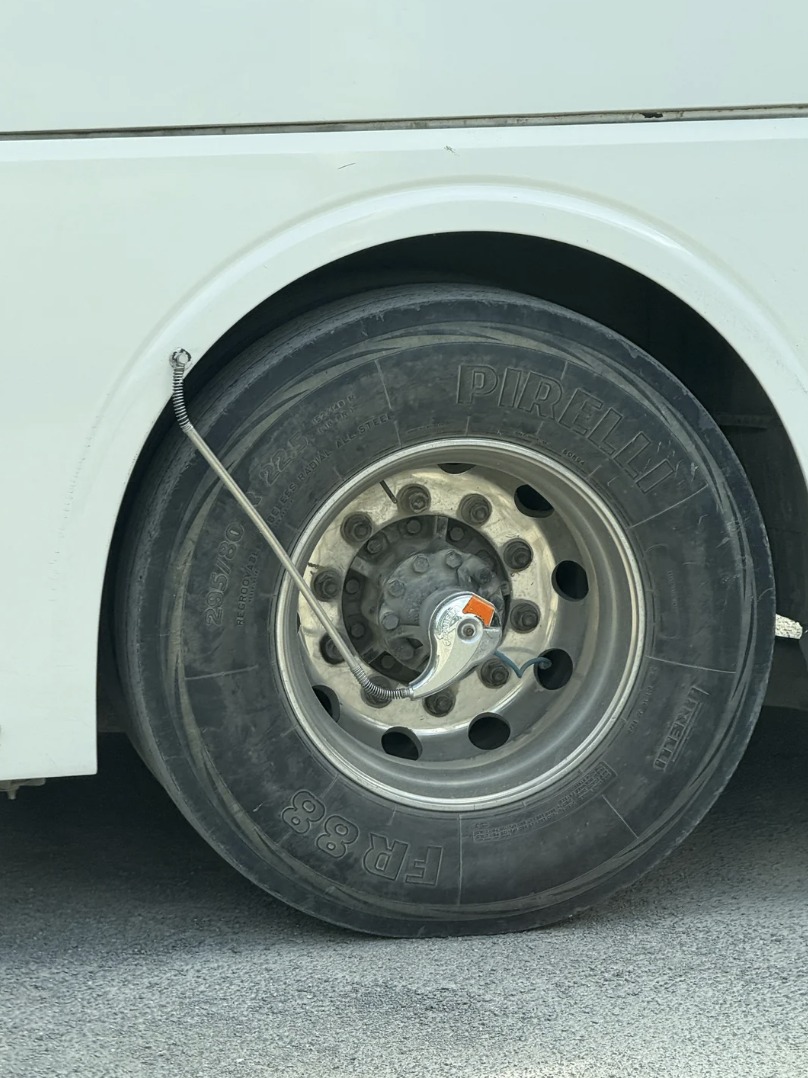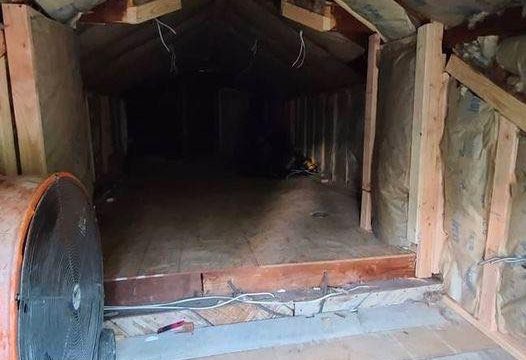While stopping at a rest area off I-40 and sipping on some mediocre gas station coffee, I noticed a large tour bus parked outside. At first glance, it didn’t seem like anything special, until I struck up a conversation with the driver who was smoking nearby. He mentioned that the bus had been on a few cross-country runs recently, which jogged my memory—I had definitely seen this same bus before.

That might have been the end of it, but then I noticed something odd: a small, thin tube sticking out from the center of one of the wheels. At first, I thought it was part of an anti-theft device, but the driver explained that it was actually part of a Central Tire Inflation System, or CTIS. I’ll be honest—I had never thought much about tire pressure beyond those occasional warning lights on my dashboard. But my curiosity got the better of me, and I decided to look into it. What I discovered is that CTIS is one of those behind-the-scenes innovations that keeps some of the heaviest, hardest-working vehicles on the road rolling smoothly and safely, often without anyone even noticing.
So, what exactly is a Central Tire Inflation System? It’s a built-in setup that lets drivers monitor and adjust the air pressure in their tires while driving. CTIS uses a series of hoses and swiveling fittings—those wiry cables you sometimes see dangling from the wheels of large trucks. These connect to an onboard air compressor that automatically adds or releases air based on the terrain, load, or weather conditions. That means no more pulling over to manually check pressure or use a pump. Whether the vehicle is climbing a dirt trail or cruising down a highway, the system maintains the ideal tire pressure without stopping.
This system has its roots in military applications, going all the way back to World War II. The military needed vehicles that could adapt quickly to rough or changing terrain without stopping to adjust tire pressure manually. Early designs were clunky and hard to operate, but by the 1980s, the U.S. military had advanced versions installed in vehicles like the Humvee. A critical breakthrough came with the invention of rotary unions, which allow air to flow through rotating wheels without causing the hoses to twist or break. This innovation paved the way for broader commercial use. By the 1990s, CTIS was appearing on logging trucks, agricultural machines, mining equipment, and eventually buses and long-haul trucks.
Why is this important? CTIS offers a host of benefits. It improves traction by lowering pressure for better grip on soft or uneven surfaces and increasing pressure for efficiency on pavement. It also extends the lifespan of tires by ensuring they wear evenly and are neither overinflated nor underinflated. Safety is a big plus too—proper tire pressure reduces the risk of blowouts or losing control, especially under heavy loads. It even helps with fuel economy by minimizing rolling resistance. And perhaps most crucially for commercial operations, it reduces downtime, keeping vehicles on the road and out of the repair shop. Visually, CTIS is pretty discreet. The most visible part is the small hose or cable running into the wheel hub. These connect to the rotary unions mentioned earlier. Some systems also include a red indicator that sticks out from the tire when pressure drops below the safe level, acting as a quick visual alert. Once you’re aware of what you’re looking at, you’ll start to spot them all over the place—from dump trucks and heavy haulers to public transit buses. So why don’t regular cars have CTIS? Mainly because of cost and complexity. The system adds a lot of extra hardware and isn’t really necessary for most drivers. CTIS makes the most sense for vehicles that frequently encounter rough terrain or can’t afford unexpected downtime. Some high-end off-road vehicles are beginning to include similar systems, but for everyday cars, it’s still a rarity. It’s funny how noticing a strange little cable on a bus tire led me down such an unexpected rabbit hole. But that’s the beauty of technology like CTIS—it works quietly in the background, making our roads safer and transportation more efficient without drawing attention to itself. So the next time you see a massive bus or truck, take a quick glance at the wheels. If you see a tiny hose attached to the hub, know that CTIS is doing its job—one perfectly pressurized tire at a time.





